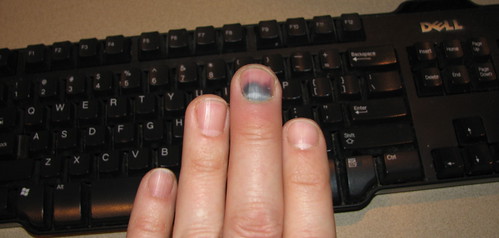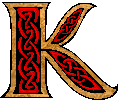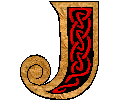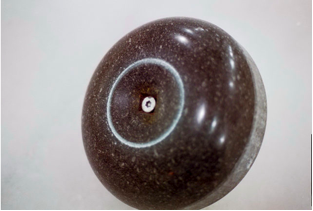One of the biggest stories in the skeptical world in 2008 was the ascension of Jenny McCarthy to the role of chief talking head for the anti-vaccine group Generation Rescue, an anti-science organization dedicated to the chimera of "Biomedical" treatment of autism spectrum disorders. I wrote a blog article mentioning Ms. McCarthy after her visit to Toronto about a year ago that received some positive feedback from the autism community, including a complimentary email from a Dr. Samuel Wang, Ph.D., a professor of molecular biology at Princeton University.
In the comments of that entry, Beth made an important point about the consequences of failing to vaccinate one's child:
...people seem to be conveniently forgetting that these vaccines prevent infections that can kill. These are not just little infections that kids will fight off, these can be killers, and they can run rampant in an unvaccinated population.
Beth's comment turned out to be prescient, as the news over the last year has been full of reports of outbreaks of diseases we used to think were nothing but distant memories from our grandparents' time. The number of reported cases of measles in the USA in 2008 was almost triple the average annual number of cases for the preceding four years. Measles. Seriously.
You may think that's no big deal. Many people think of measles the way they think of chicken pox, or rubella, but that's an error. Measles is in no way as innocuous as those diseases. Complications from measles can result in blindness, brain damage, and even death. And because of people like Jenny McCarthy, and the anti-vaccine militia at Generation Rescue, vaccination rates in North America are plummeting. It's going to get worse before it gets better.
The reported rates of vaccine preventable illnesses and vaccine preventable deaths in the United States has risen over the last two years, and a reduction in vaccination rates has definitely played a part in that. And Jenny McCarthy openly and vocally encourages people to not vaccinate their children. Dr, Steven Novella and the crew from
The Skeptics' Guide to the Universe put it very bluntly late last year when they said, "Jenny McCarthy has a body count."
Now, another member of the online skeptical community has taken that quote and run with it, creating the
Jenny McCarthy Body Count website, at which he keeps a weekly running tally of all vaccine preventable diseases and vaccine preventable deaths in the USA since Ms. McCarthy began spreading anti-vaccine bullshit in June of 2007. To the right, in my blog sidebar, you can see the Jenny McCarthy Body Count Widget, which will automatically update the tally each time the website does. Of course, Jenny McCarthy is not directly responsible for all of those illnesses and deaths. Perhaps not even any of them. But as each and every one of those illnesses and deaths were preventable by the simple act of proper vaccination, she does bear the burden of some indirect responsibility due to her anti-vaccine campaign.
I have reproduced the relevant portion of the blog article I wrote on the topic last April below for your further reading pleasure.
originally published April 15, 2008But She Was On Oprah, So She Has To Be Right
Also back in March, former model Jenny McCarthy was in Toronto for the Holistic World Expo, and spouting her load of nonsense about Autism and Vaccines to anyone who would listen. Toronto Sun columnist Michele Mandel wrote what started out to be quite a rational and skeptical article on the subject, saying: According to McCarthy, the recent alarming rise in autism -- as high as one in 150 children -- is directly tied to the increasingly heavy childhood vaccination schedule that began in the 1990s...
The scary thing is that no one in this town's goo-goo-eyed media bothered to challenge her controversial stand...
The scientific evidence, though, is pretty conclusive. The oft-touted link between autism and vaccination has been examined to death and endless studies have concluded there is no connection.
Somewhere along the way, however, Mandel lost the script. So I was all prepared to completely discount the 35-year-old crusader and her Internet science. But it turns out that part of her message may actually have something to it. McCarthy credits a complete change in diet for helping to "cure" her son of his autism. After removing wheat and casein (found in milk) and adding vitamins and supplements, she noticed a dramatic change in just six months. "I do know I undid the damage that was done by vaccines," she told one local morning show, "and healed the body. You heal the body and you heal the mind and then he was able to function in society."
Mandel appears to accept McCarthy's statement at face value, leaving all semblance of skepticism behind. There are several things Mandel had overlooked in credulously reporting McCarthy's claims on this matter.
First - and you've heard me say this before - correlation does not necessarily imply causation. Just because two things happen at the same time (or one follows the other) does not necessarily mean they are related. They might be, be it can be hard to know for sure.
Autism is a condition marked by developmental delay. Note that is delayed development, not arrested development. It can seem like an autistic child is stuck at one level of development forever, then they can suddenly progress dramatically, seemingly overnight. It isentirely possible, indeed likely, that had McCarthy not changed her son's diet, he would still have experienced the same rapid improvement at the same time. Of course, Jenny would have just found something else to credit for the change.
There are all kinds of alternative autism therapies out there - modified diet, heavy metal chelation, what have you - that people claim are effective. Scientific investigation has, to date, shown that they are not.
Second, by allowing McCarthy's statement to go unchallenged, Mandel undermines a fact she presented earlier in the piece - that there is no scientific support for the 'vaccine causes autism' claim. She has allowed McCarthy to throw in her contention that she has undone "the damage done by vaccines." Even if there is something to the claim that a modified diet can have an effect on autism, that in no way points to vaccines as a cause. But Mandel allows that idea to slip back into her readers' minds by not applying critical thinking to the whole story.
The third thing that Mandel completely overlooks is that McCarthy claims to have healed her son. She conveniently leaves out the fact that Evan McCarthy still has autism. It hasn't gone away. He just showed some developmental progress. The fact is, everything McCarthy says is complete, and utter hogwash. Mandel needed to stick to her skeptical guns all the way to the end of her article. By failing to do so, she has failed her readers. She doesn't think so. She ends by saying, "at least this prescription of hers won't cause harm." Michele, I beg to differ. If just one of your readers abandons traditional treatements and therapies in favour of the woo presented by Jenny McCarthy, then there is harm. I've said this before, too. Alternative therapies that are ineffective, are not harmless.
 is for Measurement. Sometimes, when an end of curling is finished, it is difficult to tell just whose rock is closest to the center of the rings. If it is not possible to determine by eye, a measurement is necessary.
is for Measurement. Sometimes, when an end of curling is finished, it is difficult to tell just whose rock is closest to the center of the rings. If it is not possible to determine by eye, a measurement is necessary.











